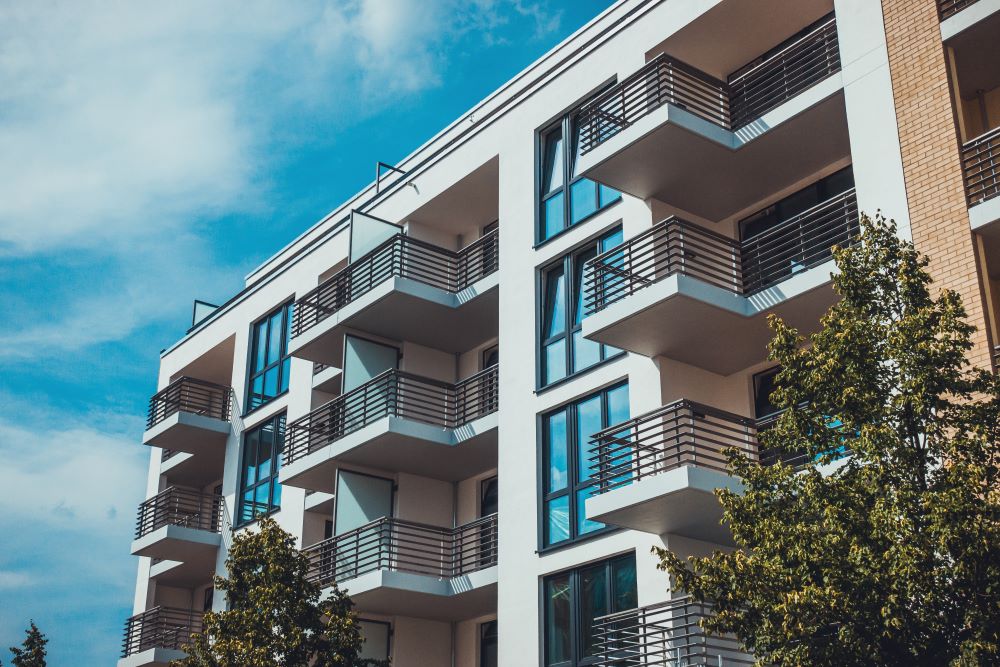Navigating Combustible Cladding Risks for Strata Properties

Expanding urbanisation in Australia has led to a surge in the use of construction materials such as Aluminium Composite Panels (ACPs) in apartment complexes. Since the 1970s, ACPs had been the most adaptable, lightweight, and economical choice in Australia.
However, it wasn’t until the 2014 Lacrosse building fire in Melbourne, followed by the Grenfell Tower blaze in London in 2017, that the extensive employment of this cladding, especially those graded as having highly flammable cores, came under scrutiny.
In 2019, the Victorian Government instituted Cladding Safety Victoria (CSV)1 to liaise with owners’ associations to aid them in correcting non-compliant or non-conforming external wall cladding on structures. CSV offers assistance, advice, and links to duly registered practitioners in the large task of replacing the problematic cladding.
Leading residential strata insurer, CHU joined forces with Cladding Safety Victoria in a webinar2 to share insights and expertise in relation to the remediation and risk mitigation of combustible cladding that can be universally adopted by all states and territories in Australia facing similar issues.
What are the risks associated with combustible cladding?
Cladding Safety Victoria have identified nearly 1,600 residential strata buildings in Victoria with some form of combustible cladding, however it is estimated that Australia wide there are over 3,000 buildings with flammable cladding.
The risk associated with combustible cladding is the rapid spread of fire across the building’s exterior, which poses a significant risk to human life and risk to the building.
One of the most common forms of combustible cladding is ACPs, or Aluminium Composite Materials (ACMs). These are flat panels constructed from a core of typically polyethylene, mineral compound, or a combination of both, bonded between two aluminium metal sheets. The core is thermoplastic and, in some instances, does not hold up well when exposed to flame making it highly combustible.
However, there are other forms of combustible cladding, including Expanded Polystyrene (EPS) which also increases the likelihood of fire spreading more quickly. EPS is a material used for insulating properties and it is usually sealed off with weatherproof rendering such as cement. Fire exposure can also emit toxic fumes as it burns.
How to mitigate the risks associated with combustible cladding?
Given the large-scale use of these materials and size of some impacted buildings, there was never going to be an immediate fix. State based regulatory changes across Australia3~ have minimised the potential risk of new buildings using non-compliant materials and aimed to address those buildings that already have it.
Risk Assessment
Each state had set a deadline for the immediate identification and reporting of buildings that have the combustible cladding. This process involved on-site inspections and fire testing of materials. Once identified, risks are categorised based on the severity of the cladding. Factors such as the type of cladding, its location (including any continuation of panels vertically) and the building’s use can contribute to the assessment.
Cladding Removal
All remediation activities must adhere to building codes and regulations. This may require close cooperation with local building authorities to remain updated of any amendments or modifications to the codes. The importance of maintaining comprehensive records of the remediation process cannot be understated. These records may be required for inspections and audits.
The webinar hosted by CHU and Cladding Safety Victoria underscores the importance of collaboration and cooperation in addressing combustible cladding issues. By bringing together industry experts, regulatory bodies, and stakeholders, a collective effort can be made to develop effective solutions. It also highlighted the advantages of strata property owners working with regulatory bodies such as CSV, as in some instances, their investigations have resulted in a “low risk” assessment being issued to a Body Corporate and confirming that no further action is required.
What are the implications for Stata Insurance?
The presence of combustible cladding does not automatically deem a building to be uninsurable. But, if your building is affected, it is imperative to inform your insurer or broker. Some insurers may offer restricted terms or exclusions while there are some that may decline to offer cover at all.
Typically, insurers will ask for details about whether a building has cladding, what percentage of the building is covered, what type of cladding is present and possibly an engineering report or commentary from a suitably qualified expert on what action is required, if any. Results of any testing and a plan and timeline for its replacement (if required) is also material information.
With over 45 years of strata experience, CHU’s goal is to support the strata industry by offering insurance solutions wherever possible. To ensure the best insurance outcome, the most important thing for a building with cladding is to provide as much information as possible to their insurer and to demonstrate their proactive approach to investigating or addressing the risks.
For more information on risk mitigation and residential strata insurance visit chu.com.au
Insurance issued by QBE Insurance (Australia) Limited ABN 78 003 191 035 and distributed by CHU Underwriting Agencies Pty Ltd ABN 18 001 580 070 AFSL 243261. Any advice in this article is general in nature and does not take account of your personal objectives, financial situation and needs. Please read the relevant Product Disclosure Statement (‘PDS’), Financial Services Guide (‘FSG’), and the Target Market Determination (‘TMD’) which can be viewed at www.chu.com.au or obtained by contacting CHU directly.
~ it is important to check each state’s new regulations.
View Comments
(0)